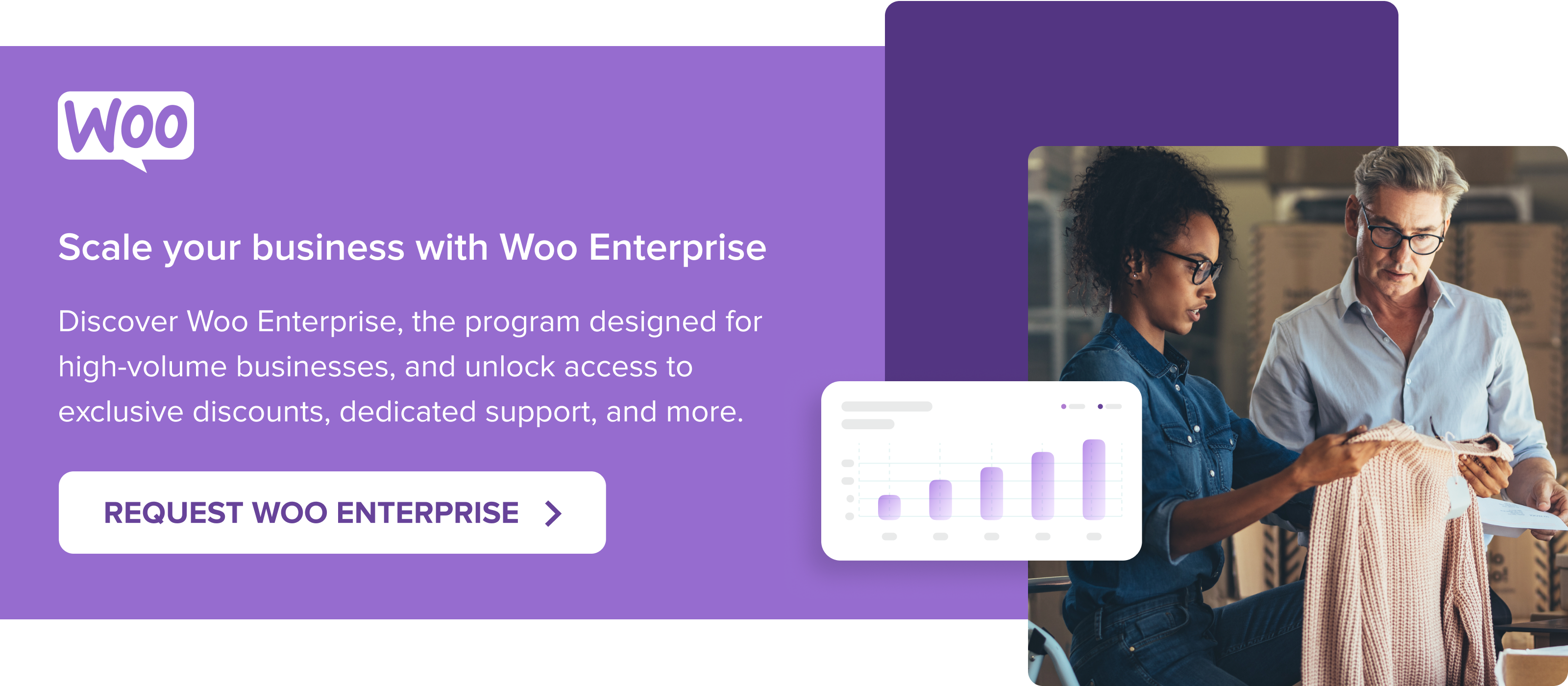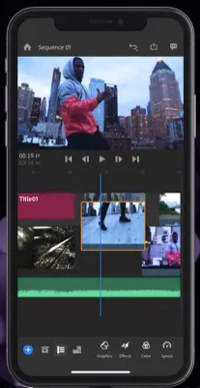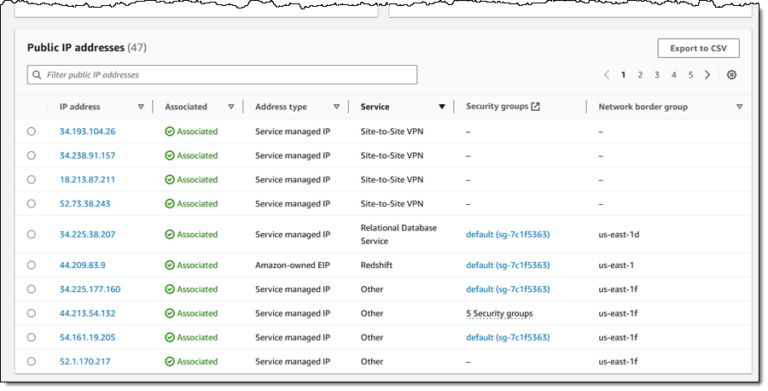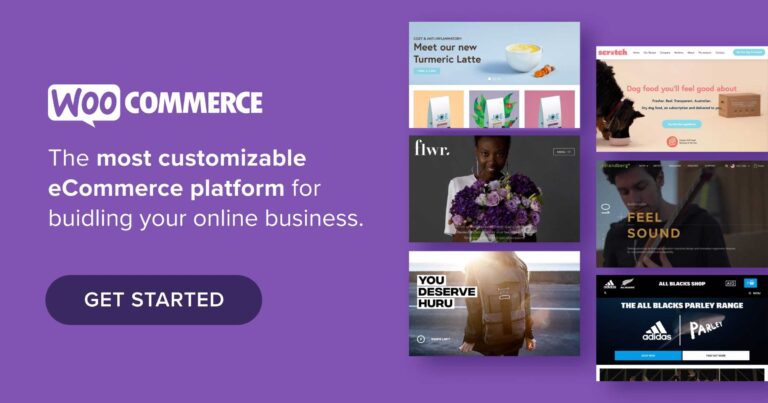Global ecommerce sales will top five trillion dollars for the first time this year. Considering this rate of growth, it’s easy to turn all your focus online. But, you may be missing out. Why? Because there’s a lot of potential in an omnichannel retail strategy.
Omnichannel retail means creating a seamless sales process across multiple shopping methods, including your online store, brick and mortar retail location, social media platforms, and more. It means stepping back and looking at the shopping experience as a whole, not just on one individual platform.
In a time when the retail landscape is full of instant gratification and an increasing array of competition for customers’ attention, this level of convenience can make all the difference. Let’s take a look at how developing an omnichannel strategy can lead to greater brand loyalty and more purchases, along with how WooCommerce can make the entire process harmonious.
What is omnichannel retail?
Omnichannel retail (also referred to as omnichannel commerce) unifies online and offline interactions so that shoppers can engage with your brand in person, on their own mobile device, using their favorite apps, on your website, or through social media, creating a consistent brand experience across multiple channels and throughout the customer journey. It’s the gateway to ultimate convenience for your customers.
Example of an omnichannel retail strategy
Let’s take a look at an example of a brand that uses an omnichannel shopping strategy – Dr. Scholl’s.
Dr. Scholl’s is a shoe, orthotics, and over-the-counter foot treatment retailer. While they don’t have their own brick and mortar store, they do sell their products directly through a variety of physical stores and online shopping platforms.
Dr. Scholl’s sells direct via their WooCommerce-powered website.
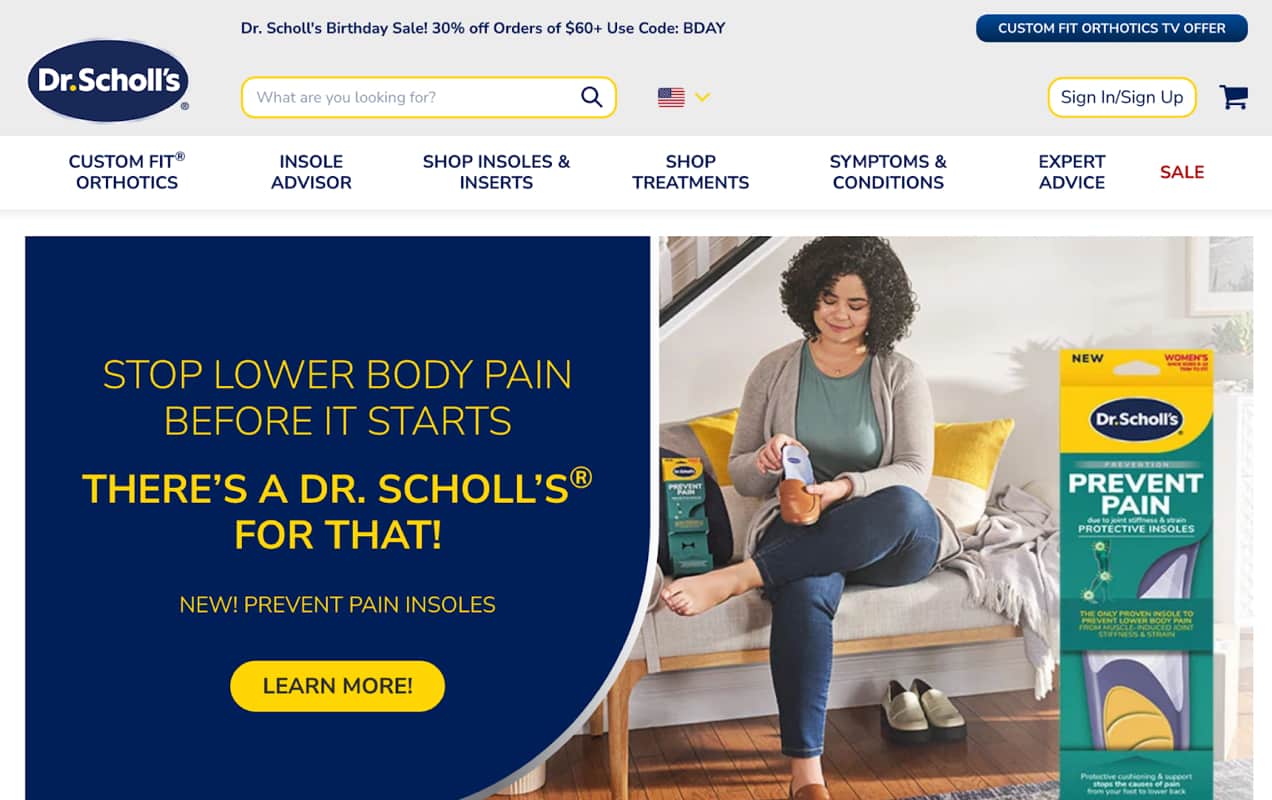
Additionally, they sell through online marketplaces like Facebook Shops and Amazon.com.
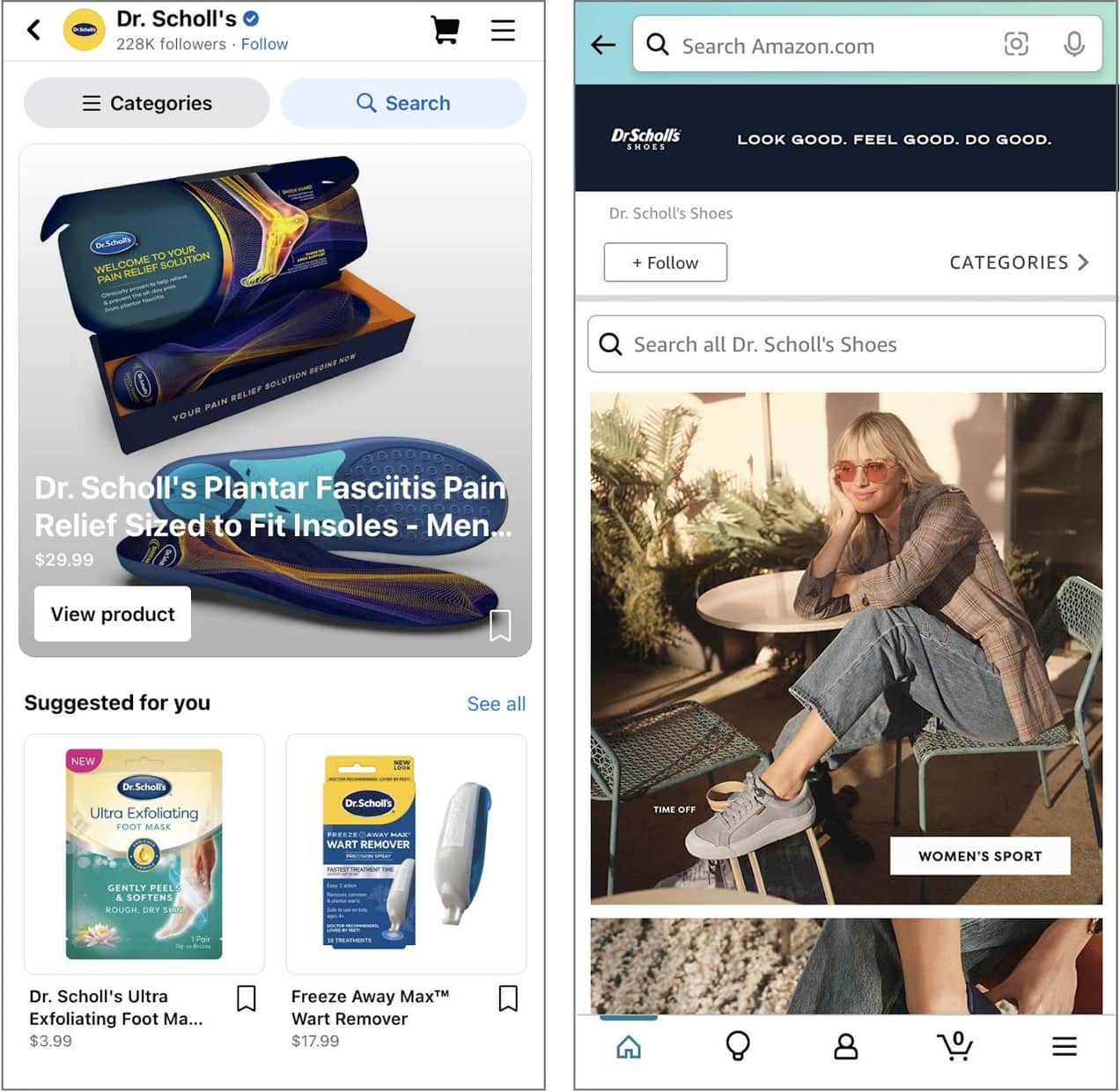
Their products are also distributed wholesale to other retailers who themselves are using an omnichannel retail strategy, including in-person retail stores. Carnival Shoes, Famous Footwear, Nordstrom, Walmart, and CVS are just some examples of their wholesale distributors.
Dr. Scholl’s and their distributors also have a presence on Google Shopping so customers can compare prices to find the best deal or buy online from their favorite store.
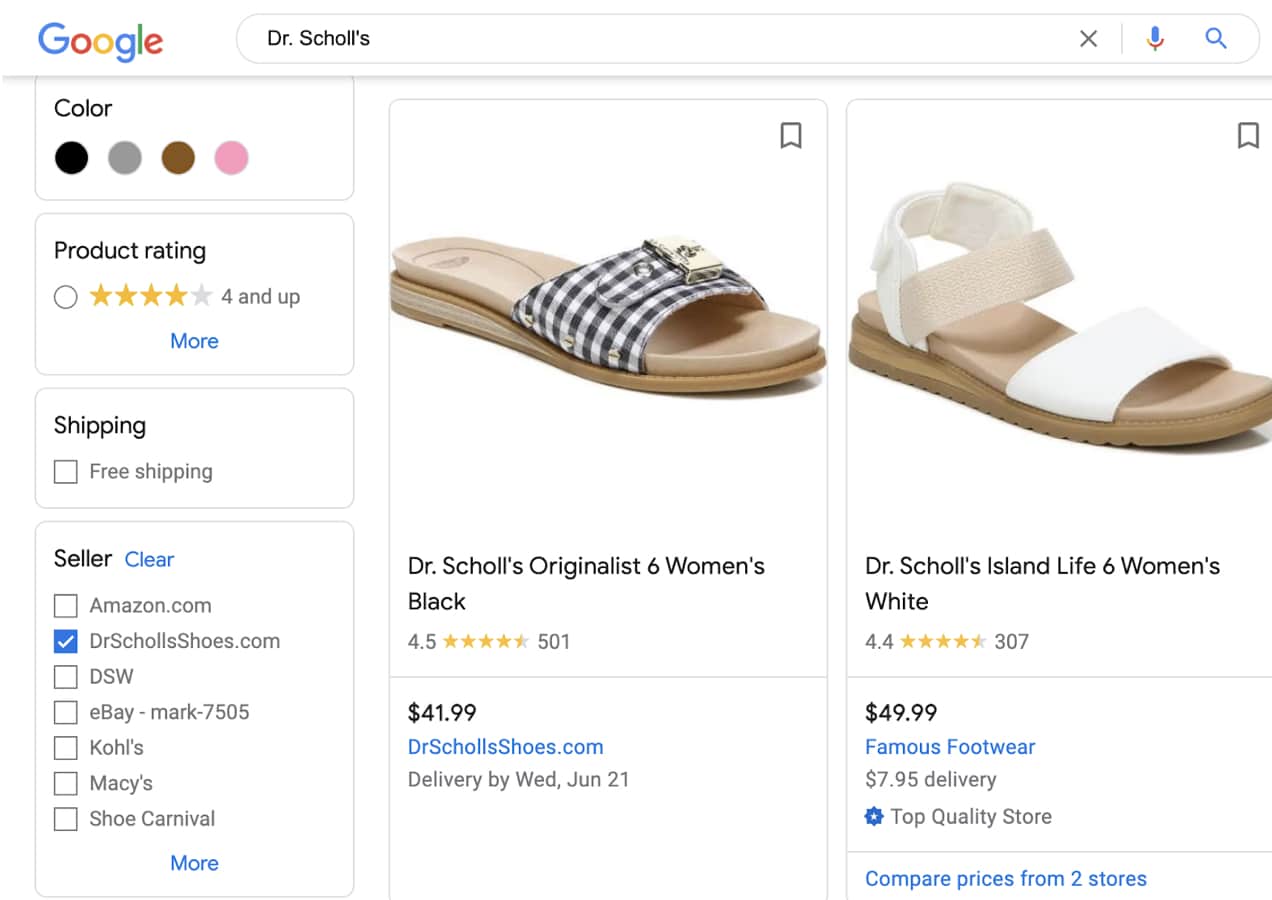
Since Dr. Scholl’s also creates custom orthotics, many customers might feel more comfortable having custom-designed insoles measured in person. To meet the needs and preferences of these customers, Dr. Scholl’s placed custom fit orthotics machines at brick and mortar stores like CVS and Walmart.
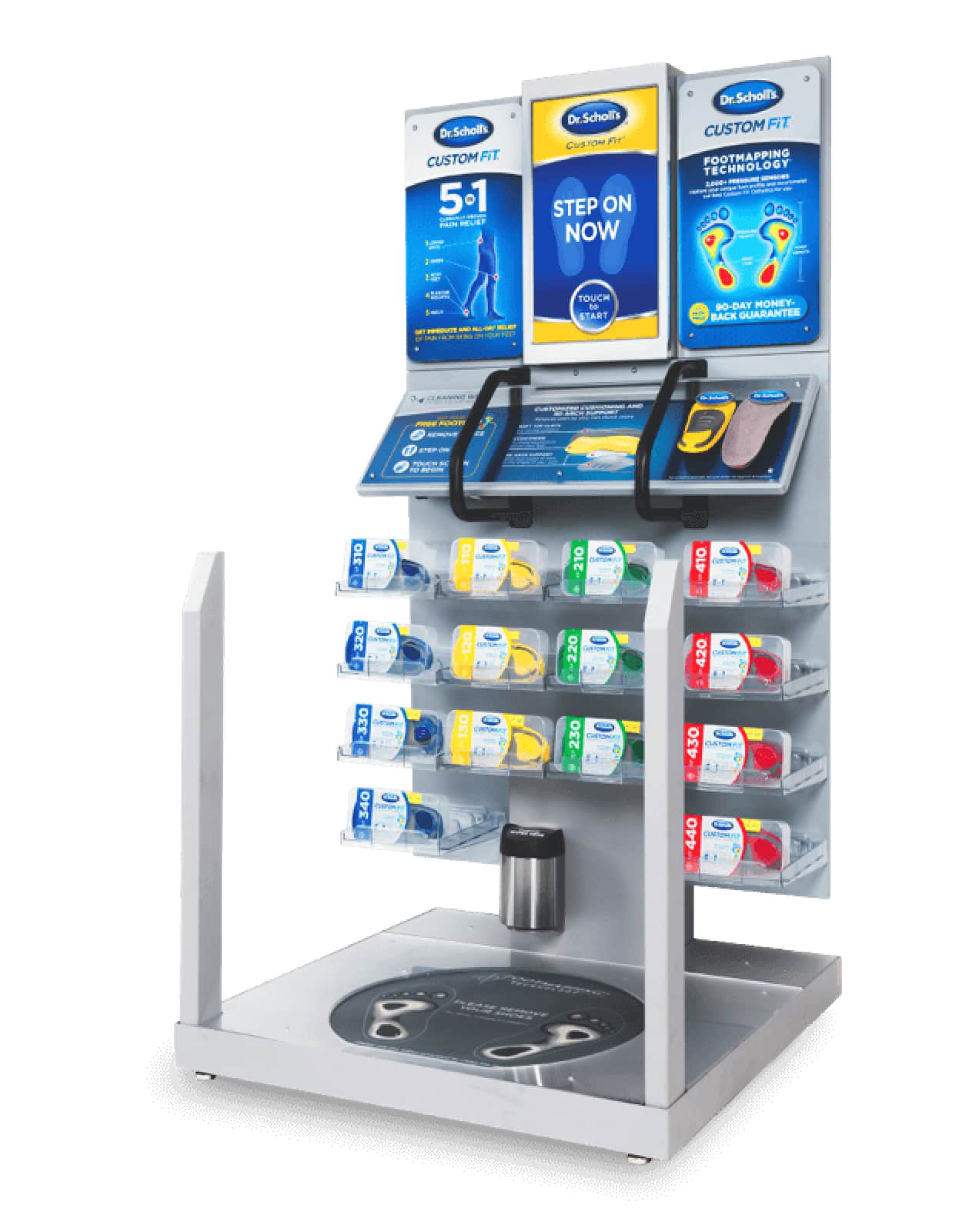
Image courtesy Dr. Scholl’s
Whether a customer is designing and purchasing a custom orthotic in person at a physical store like CVS, buying a pair of shoes from Nordstrom online, or purchasing a foot treatment directly from Dr. Scholl’s website, the Dr. Scholl’s brand name appears on all product listings, packaging, and merchandise.
No matter where a shopper is purchasing from, they know that they are buying a Dr. Scholl’s product and not a brand competitor.
Why is having an omnichannel retail strategy important?
The retail landscape has undergone a significant transformation over the past decade. Consumers now demand seamless and personalized shopping experiences across various channels, both online and offline. To meet these evolving expectations, businesses need to be almost omnipresent across a wide variety of shopping environments and marketing channels.
Diversifying your sales channels alone isn’t enough, though. A successful omnichannel retail strategy also prioritizes creating a cohesive and consistent customer journey. Customers should be able to transition effortlessly from online channels to in store shopping and across different customer service touchpoints.
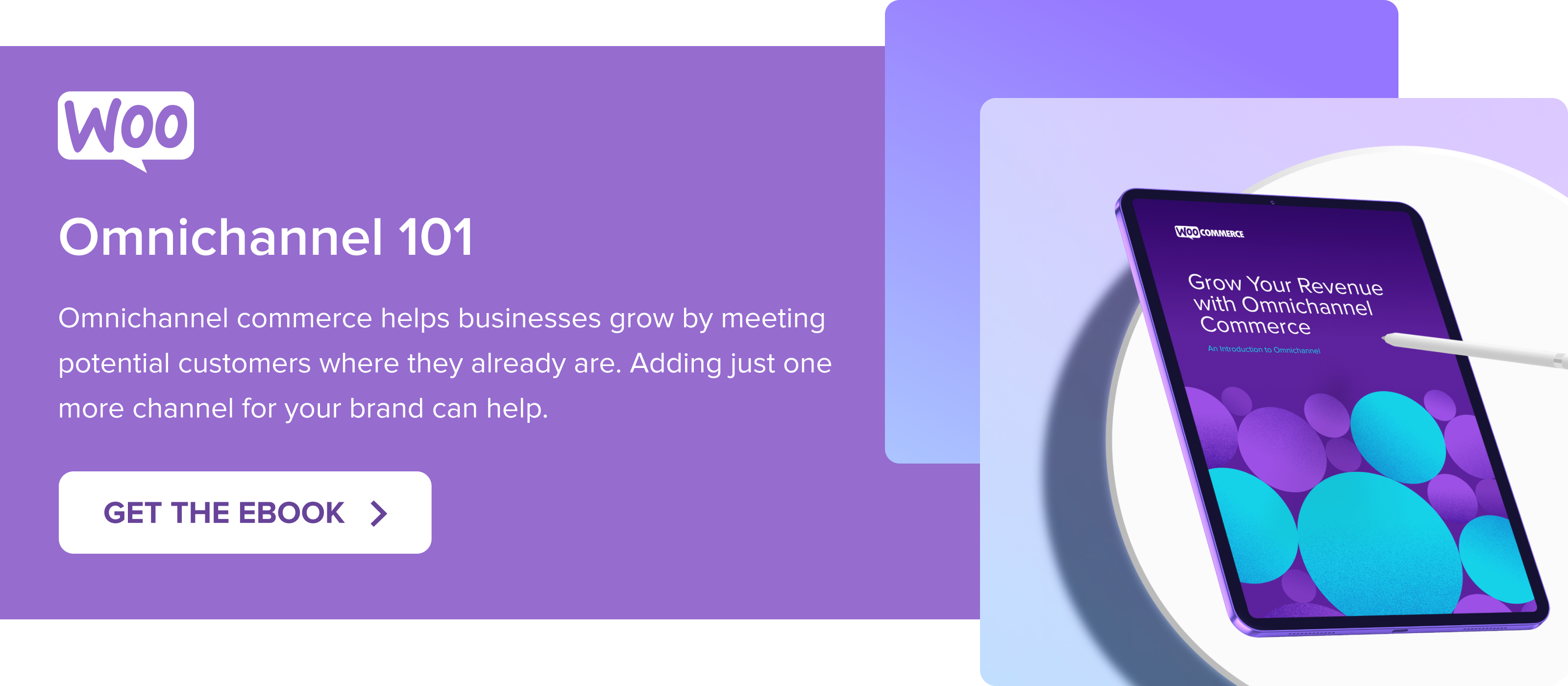
For instance, customers should be able to research products online, add items to their cart, and then complete the purchase in-store or via mobile apps. When reaching out to customer service for an issue with a product, the sales associates or other representatives should be able to access customer purchase history on separate channels and take care of product servicing, refunds, reshipments, credits and any other issues the customer may be experiencing.
Additionally, using integrated payment systems that work across your in-store and online shopping platforms can make the transaction process a smooth and seamless experience for your customers.
Let’s dive into a little more detail on the six key benefits of providing an omnichannel retail experience for your customers.
1. Brand presence and consistency across multiple channels provides a top-notch customer experience
Let’s say that you’re an independent artist who sells fine art prints and other merchandise through your ecommerce website, as well as in person at art festivals and conventions. A shopper buys one of your products at your festival booth in person, then wants to purchase another a few weeks later. They might visit your website or use one of your social platforms to find your brand.
By providing a consistent brand experience at the festival and personalized shopping experiences online, they know what they can expect and understand that they’re in the right place.
As you grow your business, you might decide to add the ability for customers to purchase directly through social media marketplaces and a brick and mortar art gallery. Later, you might start a membership opportunity for fans of your art and your merchandise can support your ongoing creative efforts.
Keeping that same brand identity recognizable throughout different channels will ensure built-in trust from fans. And as your brand grows, so will your customer loyalty.
2. An omnichannel retail experience drives more sales
In one study, omnichannel shoppers spent four to ten times as much as their single-channel counterparts. The more options customers are offered to conveniently and easily interact with and purchase from your brand, the more likely they are to make repeat purchases, which results in more revenue for your business.
3. Multiple customer touchpoints leads to more loyal customers
A Harvard Business Review study showed that customers returned to an omnichannel retailer 23% more often than other stores. And that’s not a surprise. Most people will pick the business that best caters to their needs and provides the best shopping experience.
Additionally, an extensive brand presence – from in store shopping to shopping apps – leads to increased brand reputation. If customers see your products on trusted websites, their favorite social media platforms, and in physical stores, they’ll trust that your products are dependable, that your supply chain can be relied on, and that there will be associates available to resolve any problems.
4. Using several channels for sales helps you reach customers where and when they prefer to shop
Consumer behavior varies from customer to customer. Some may prefer to shop in-store at a brick and mortar location. Others may prefer shopping online and picking up their purchase in store at a time that works for them.
Still others might find online shopping that avoids any need to leave their home to be the best fit for their needs. Social media users may discover your product through Facebook, Instagram, TikTok, etc. and want to purchase it without going through a separate checkout experience. Omnichannel commerce allows them to shop whenever and wherever is most convenient for them.
5. Omnichannel retailing provides valuable data that can shape your business model
Gathering data from your online and offline channels allows you to compare sales revenue, traffic sources, and demographics from various touchpoints to discover which avenues are performing best for your brand. This data provides valuable insights into the overall customer journey as well as individual preferences, shopping behavior, and buying patterns.
By analyzing this information, you can make informed decisions about inventory management, pricing, promotions, and personalized marketing campaigns. Having this wealth of data at your fingertips also helps you to adjust your marketing to focus on the shopping experiences that are providing the best returns for your business.
The data-driven insights that omnichannel retailing provides can guide you when optimizing operations, enhancing customer segmentation, and driving business growth. And with Woo, high-volume stores may qualify for Woo Enterprise, a program designed for business at scale. It offers unique benefits including dedicated support and discounted extensions. Get in touch with our team to learn more about Woo Enterprise.
6. Successful omnichannel retail strategies work as a safety net for your business
If you rely on a single point of sale for your retail business and that sales channel doesn’t perform well, you could be quickly out of commission. If, instead, you spread your efforts across even three or four additional channels, you’ll create more opportunities for success.
It gives you the chance to review the channels that aren’t performing as well to see what could be improved to increase customer engagement and channel performance. Perhaps an underperforming platform needs to even be dropped from your business model entirely.
You’re also able to take more risks and experiment with new ideas for your business. If a new product or marketing strategy doesn’t perform well in one channel, you don’t have to worry about it drastically affecting your business. You can also more safely and cautiously scale successful experiments to see how they perform across different retail environments.
Tips for a successful omnichannel retail strategy
So how can you make the most of omnichannel retailing and provide the best possible customer experience for shoppers? We’ve made all the tools available to help you not only bridge, but unify, multiple commerce channels.
1. Unify payments across your online platforms and in store
Let’s say you own a bakery that accepts online orders for birthday cakes. Having an omnichannel retail experience in this case means that a customer can place their cake order online a week ahead of time, phone your bakery a few days later to add on a special cake topper, and then pay the final price in person when they come to pick it up. They may also add some birthday candles to their order at the point of purchase.
They’ve now interacted with your shop in three different ways. But on the backend, all of the data analytics from these interactions are tied to their initial online order and are ideally tracked from a single management dashboard.
Since you have all that data in one place, you can use that information to make recommendations based on each customer journey and on their past preferences. This enables you to offer a more personalized and seamless shopping experience for your customers, encourage repeat purchases, and increase their average order value.
WooCommerce In-Person Payments helps you extend WooCommerce Payments from online to a physical point of sale, creating a custom in-store checkout experience that’s fully aligned with your brand – no in-person payments expertise or months of development work needed.
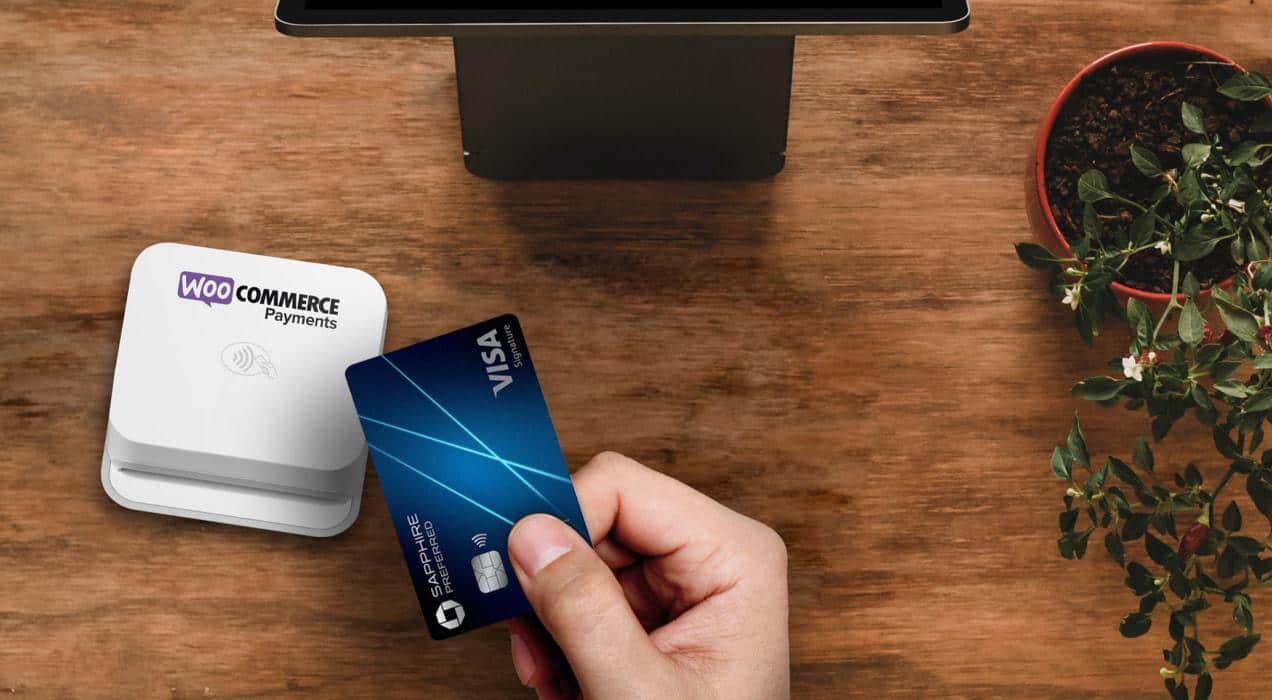
Combining that with a card reader (that’s M2 in the U.S. or WisePad 3 if you’re in Canada) and the WooCommerce Mobile App will allow you to accept your customers’ preferred payment options wherever you are. Or, with Tap to Pay on iPhone and the WooCommerce Mobile App, you can accept in-person contactless payments, right on your iPhone.
No matter how your customers choose to pay, the all-in-one dashboard lets you keep in-person payments within WooCommerce, so that all your transactions are tracked and viewable in one place. Meanwhile, your customers enjoy a frictionless experience that lets them engage with your brand however and wherever it’s convenient for them.
2. Ensure recurring revenue with subscriptions
Translating an online experience to one in person is important, but it doesn’t tell the whole story. Subscriptions can add consistency and flexibility to your cross-channel customer interactions.
Let’s imagine that you own a flower shop with a brick and mortar presence. Customers routinely pop into your physical store only to place a one-off order for a special occasion. You then launch an online store so that you don’t have to rely solely on in-store foot traffic. This expands your geographic reach, but you’re finding monthly revenue to be uneven and unpredictable.
A great solution for this is to offer subscriptions for your customers. With WooCommerce Payments’ built-in subscription functionality (in the U.S. only), you can allow shoppers to purchase a weekly or monthly flower delivery subscription through your website.
If you’re outside the U.S., you can use the premium WooCommerce Subscriptions extension. Automatic billing and built-in renewal notices help eliminate service interruption, ensure repeat customers, and provide residual revenue you can count on.
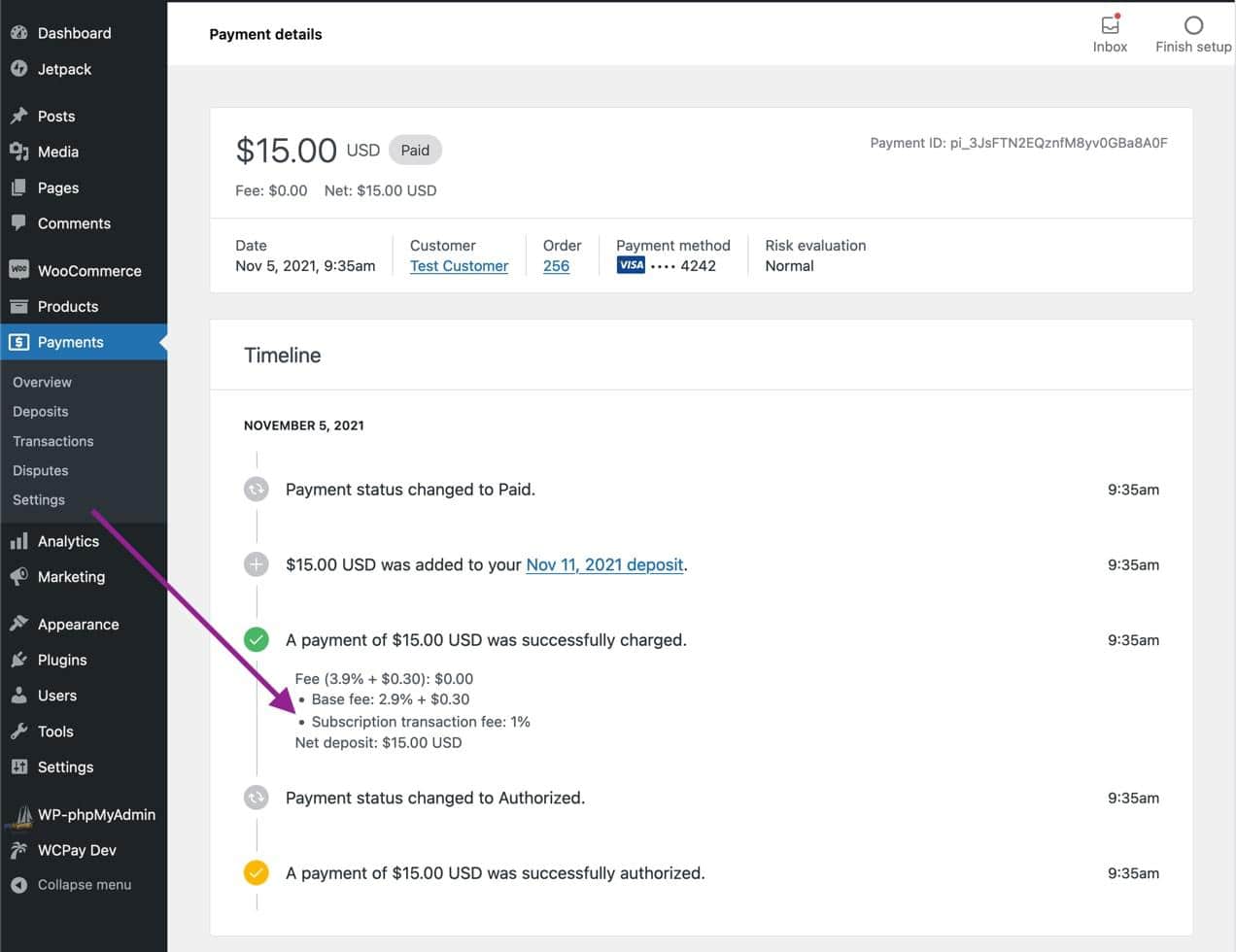
3. Offer excellent customer service throughout the customer journey
No matter how people shop with you, they should receive the same level of top-notch customer service. Of course, this will look different for each business and scenario. Here are some examples:
Responding to emails
Provide an email address on your website, or add a form to your contact page so people can reach out at any time of day or night.
Answering phone calls
Make a business number available for those who prefer to ask questions or get help over the phone.
Enabling live chat
With an extension like LiveChat, you can provide instant customer service from any page on your site and through other platforms like Facebook Messenger and Apple Business Chat.
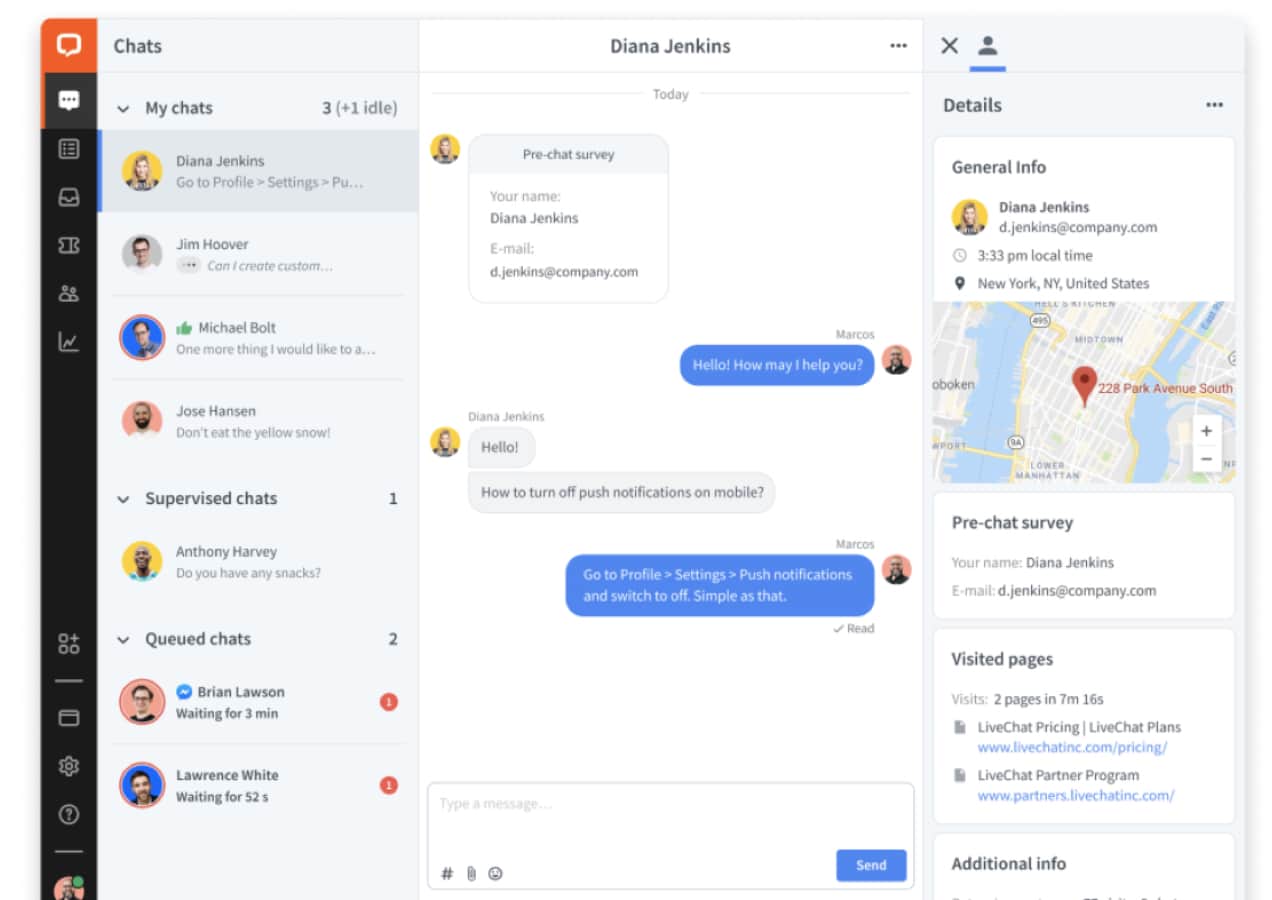
Being available on social media
With tools like the Facebook for WooCommerce extension, you can make yourself available directly on social media. Customers can even start a conversation on your website, then continue it on Facebook no matter where they are.
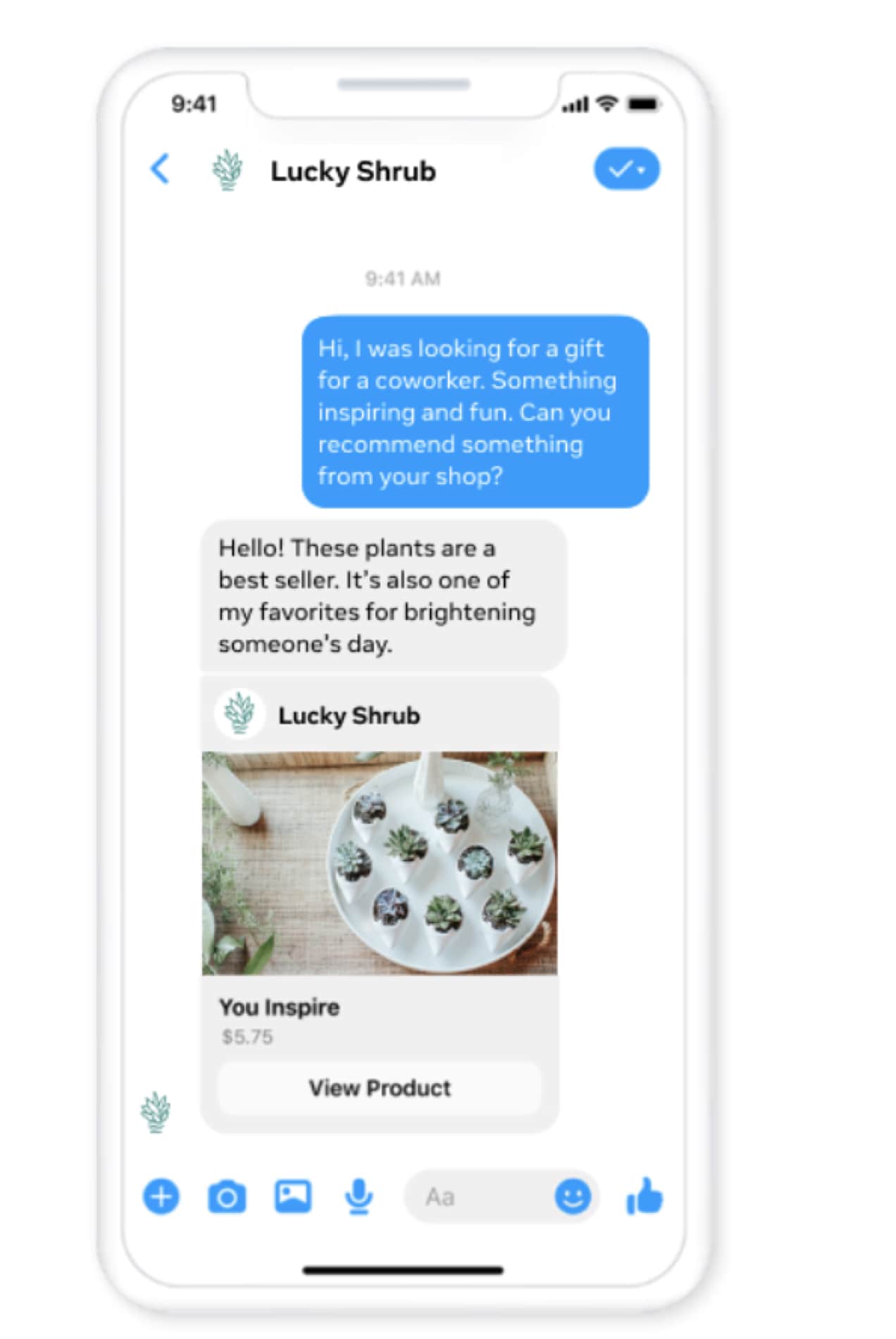
Providing multi-channel training to your customer service representatives
It’s important that you also make all pertinent information available to each and every customer service representative. Provide them with product documentation and specs, return policies, shipping policies, coupons and sales information, etc. so that they can properly answer questions across each platform.
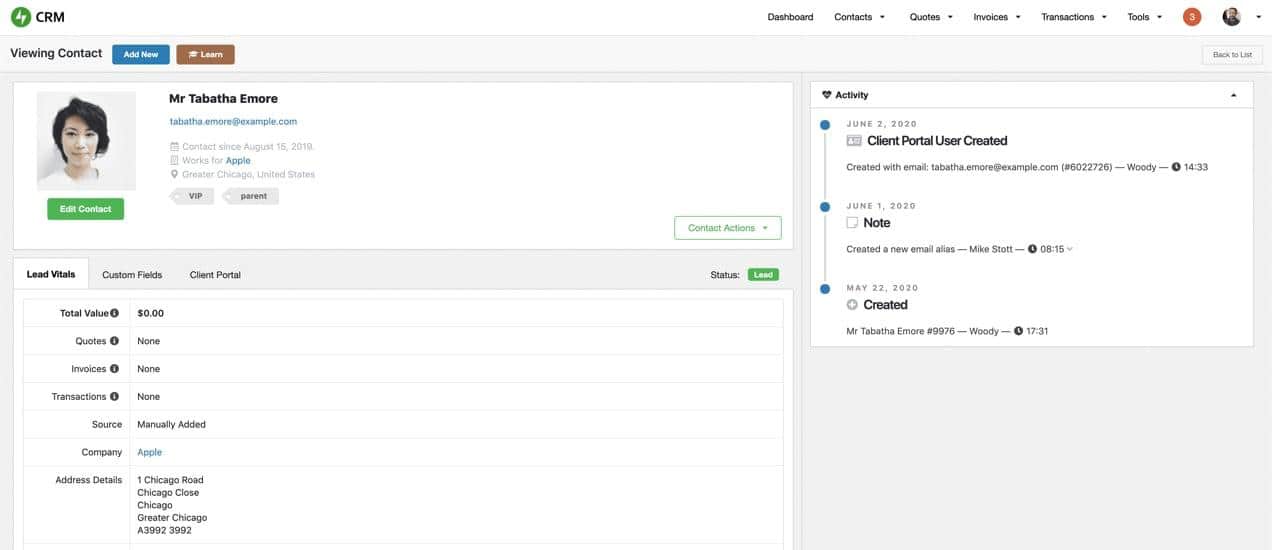
Using a customer relationship management tool
You may even want to use a customer relationship management tool (CRM) like Jetpack CRM. This makes information about each individual shopper – essential data like sales history and personal details – available at all times, and eliminates potential disconnects across multiple channels.
Your team should be able to track the customer’s support ticket history across multiple channels to provide a personalized customer experience as well as increase the helpfulness of your customer service team.
In the digital world, shoppers expect a consistent experience whether they’re requesting customer service on their mobile devices, returning a product in store, or filling out a contact form on your website.
It’s important to put forth the effort to meet consumer expectations and provide that consistent customer experience. In the retail industry, customer satisfaction is paramount at every point in the shopping journey – especially customer service.
Incorporating cross-channel customer service and a seamless shopping experience helps to build positive relationships with shoppers, removes barriers, and leads to increased conversions, sales, and customer loyalty.
4. Keep your branding consistent
Omnichannel retailing is all about creating a consistent, seamless customer experience, everywhere. Apply that to your branding as well!
Whether your customer is using a digital channel or shopping in the physical world, they should know that they’re in the right place. Use the same logo, fonts, graphics, and colors. Stick with consistent language and messaging.
Create a brand identity guide that details your brand’s specific colors, ways that your logo can and can’t be used, and provides guidelines for font usage, image styles, and tone for marketing copy. This way no matter who is working on your marketing campaigns, product designs and packaging, in store displays, or digital sales channels, your brand will have a uniform appearance and voice that will be recognizable to customers on every single channel.
Keep information like pricing, locations, phone numbers, and email addresses accurate and up-to-date. Remember to not only update this information on your primary website, but also on search engine listings, social media, and all advertising channels – especially any printed materials since those cannot be as easily changed on short notice compared to digital ads.
5. Make it easy to return products
Returns are an inevitable part of running a retail business. And just as shoppers can buy across multiple online shopping platforms as well as in store, they should be able to return or exchange across them as well.
Allow them to ship their item back to you or return it directly to the store. You can also use a tool like Returns and Warranty Requests to enable shoppers to request a return directly through their account on your website.
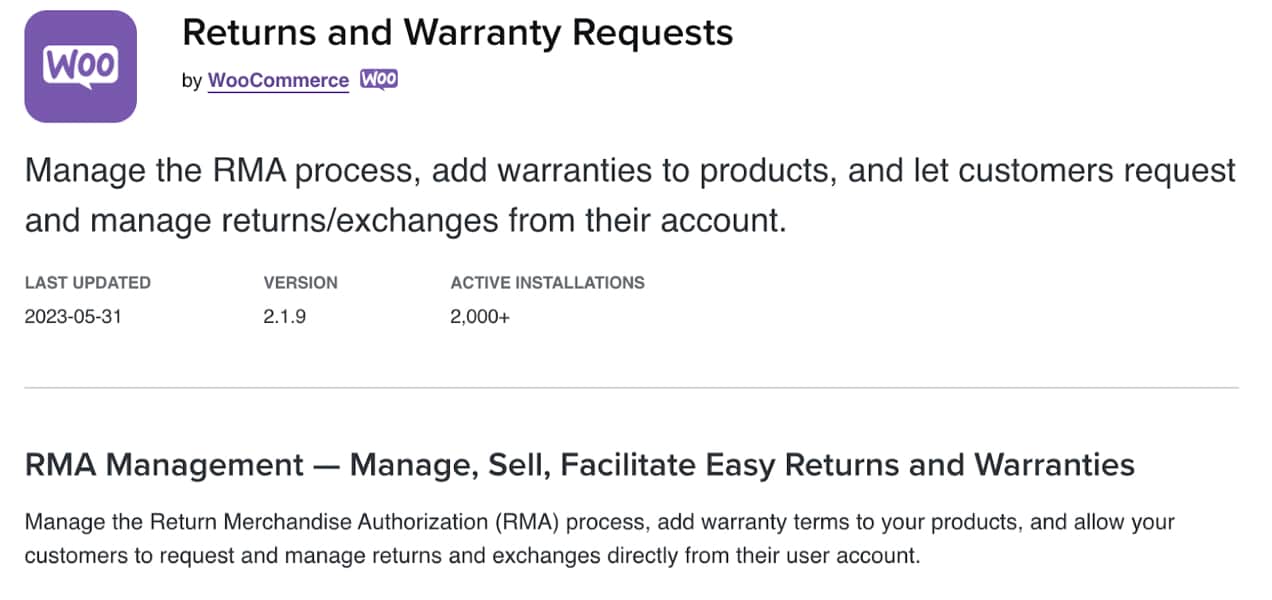
And again, make sure your policies are consistent across all platforms, and equip your support teams with any and all pertinent information.
Make the most of omnichannel retailing with WooCommerce Payments
Creating a payments system that works seamlessly across online and in-person experiences can be challenging, particularly if your business has historically operated through just one channel. There are a sea of payment gateway and payment processor options out there and it can be difficult to choose which one is right for your business.
Whether it’s cross-border regulations, a disjointed brand experience, siloed payments and transaction data, or you’re simply lacking the resources and expertise to bridge multiple channels, you don’t have to tackle any of these challenges on your own – WooCommerce Payments is here to assist!
We can help you deliver a smooth omnichannel customer experience with a flexible and scalable payments solution. WooCommerce Payments can also give you better insights into your business with unified customer data, streamlined reconciliation, and seamless reporting across both payments and inventory management.
WooCommerce Payments is built with a focus on security, stability, and compliance so you can focus on building the right experiences for your customers. And since it’s made by the creators of WooCommerce, you won’t have to ever worry about compatibility issues that can arise with other third-party payment gateway extensions.
Plus, you’ll benefit from instant deposits, be able to accept more than 135 currencies, enable customers to save their credit card information, and integrate with digital wallets like Apple Pay and Google Pay. You can now provide a more accessible, frictionless customer experience without hours of custom development.
WooCommerce Payments is ready to work for you. Get started with In-Person Payments M2 (U.S. only), In-Person Payments Wisepad 3 (Canada only), or subscriptions and launch your own omnichannel retail journey today.
